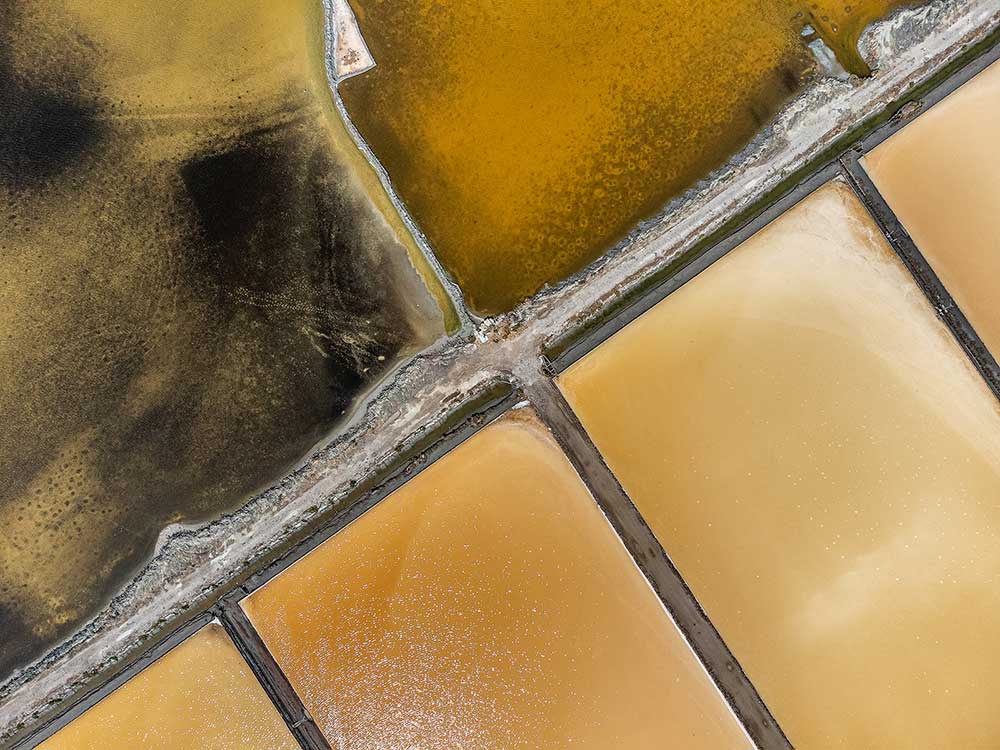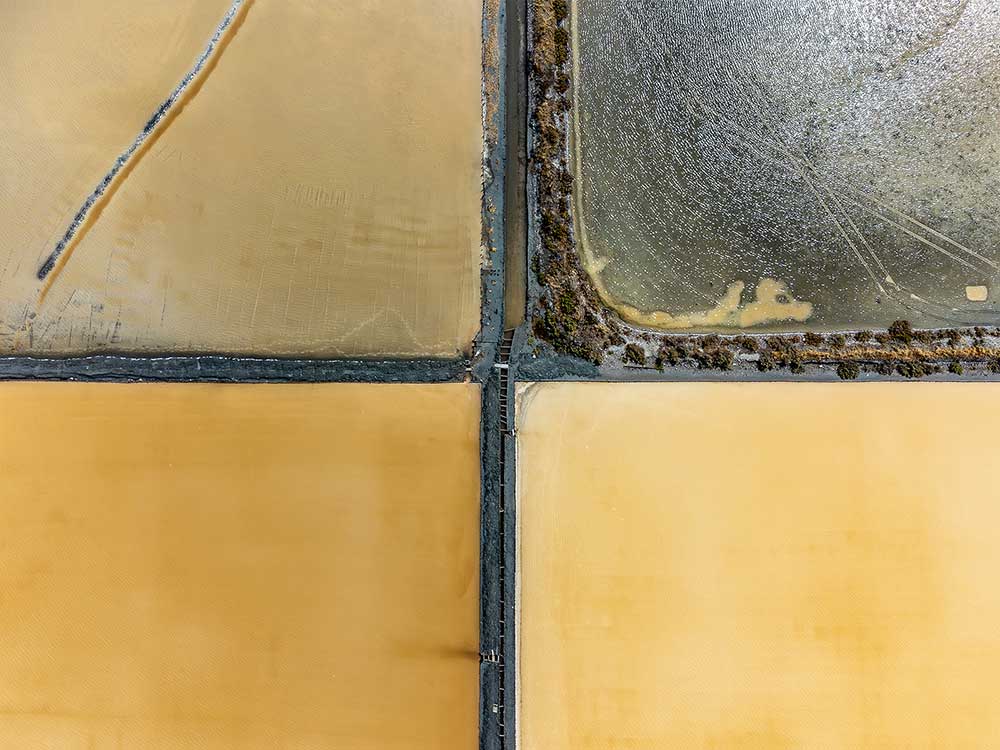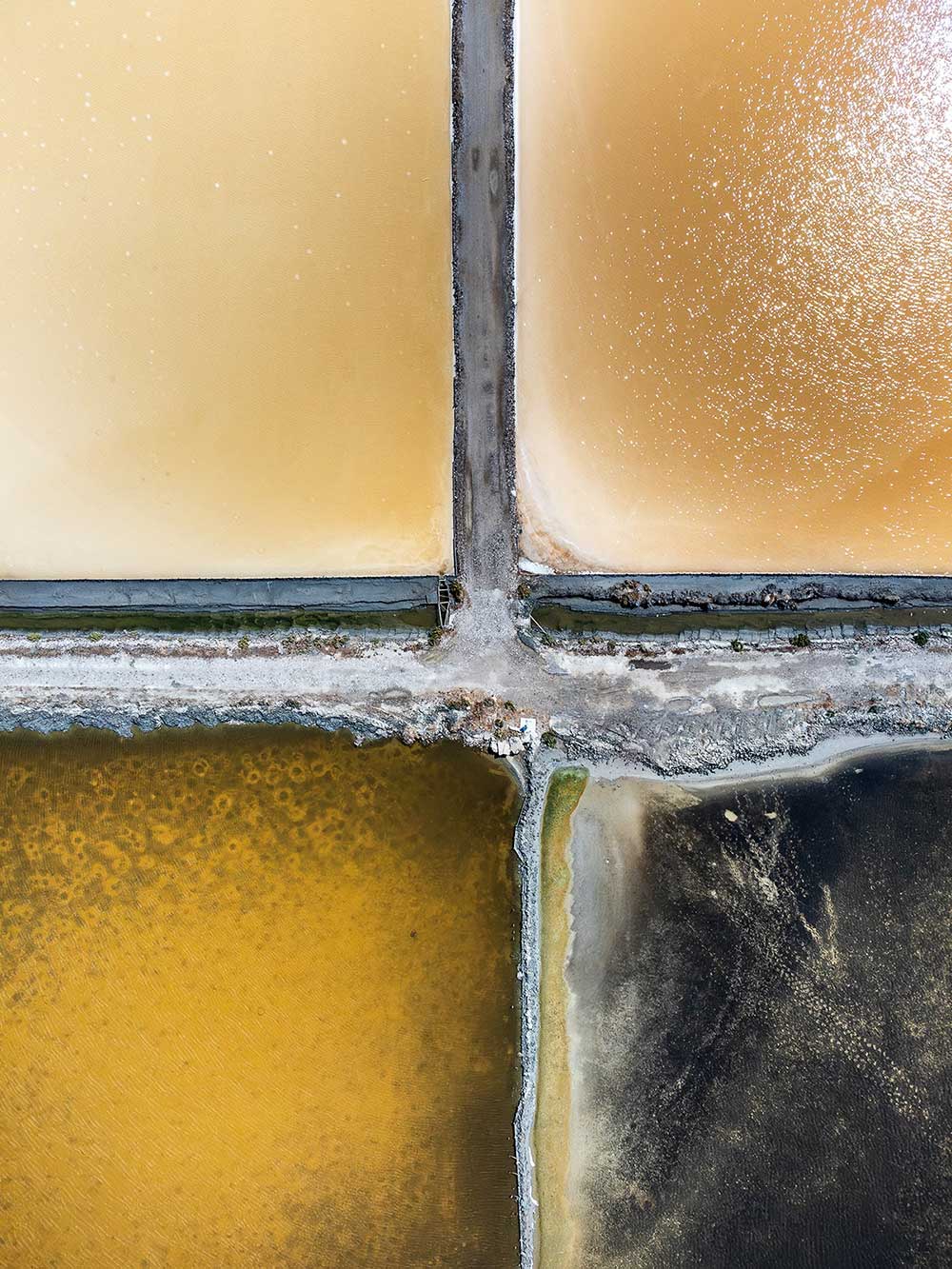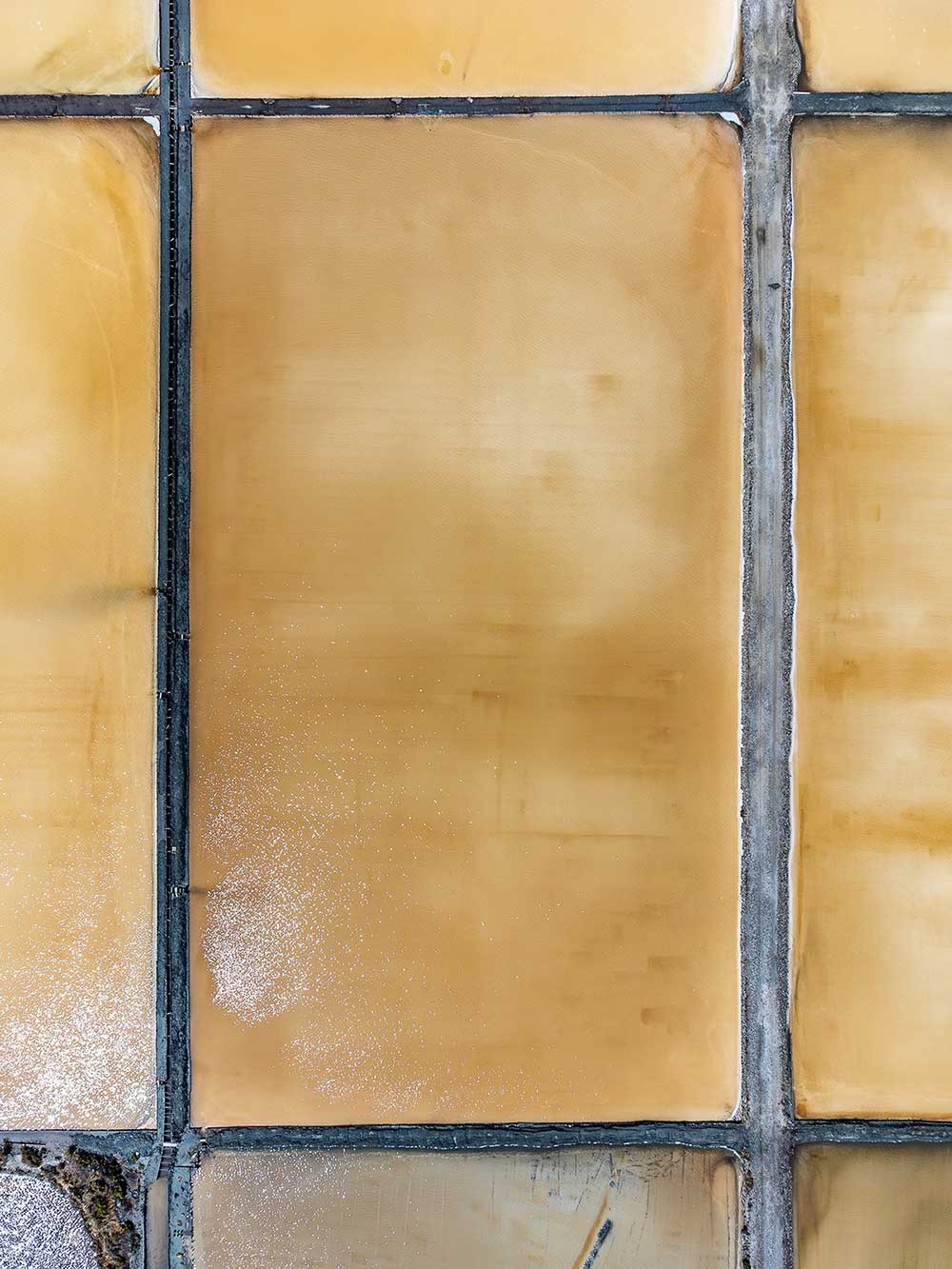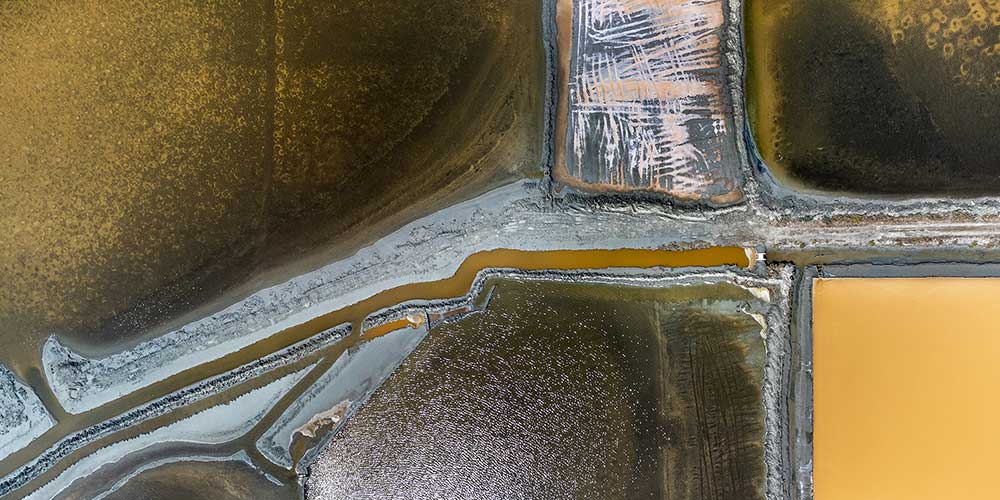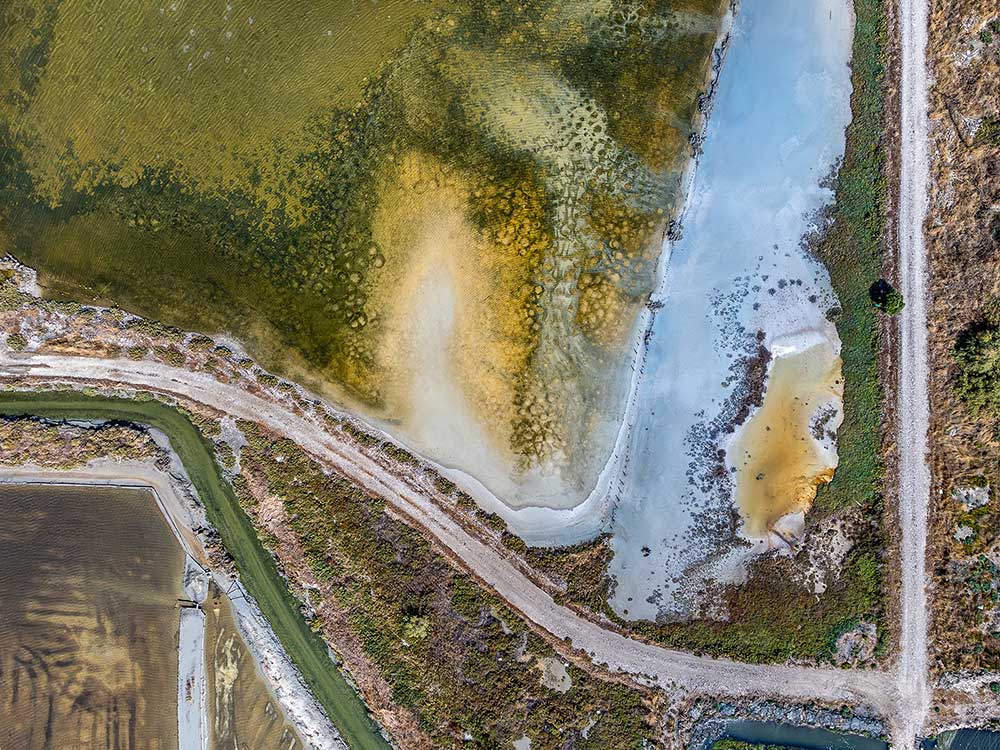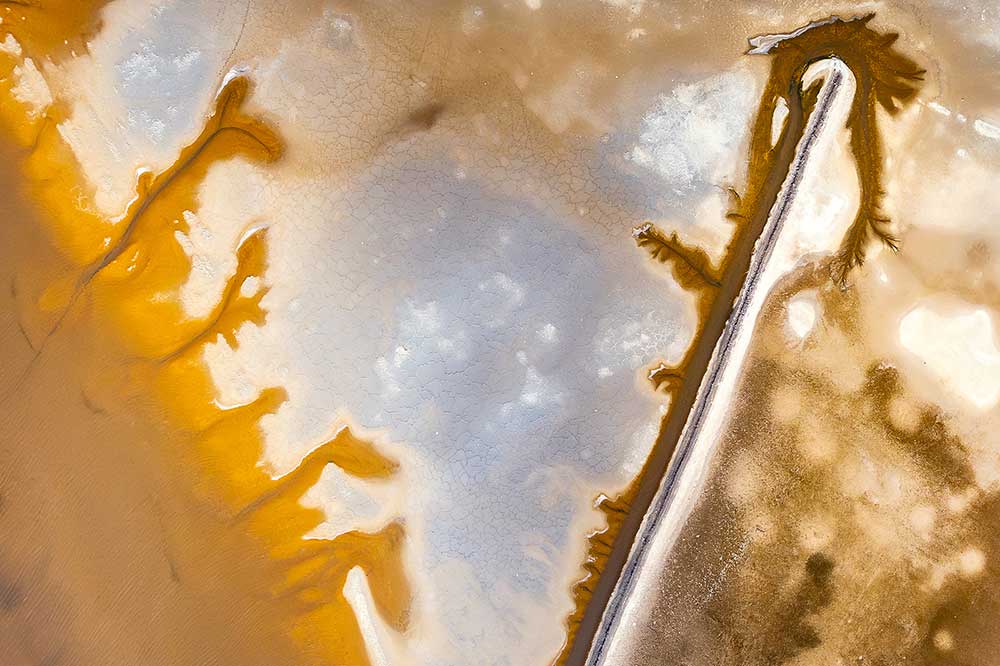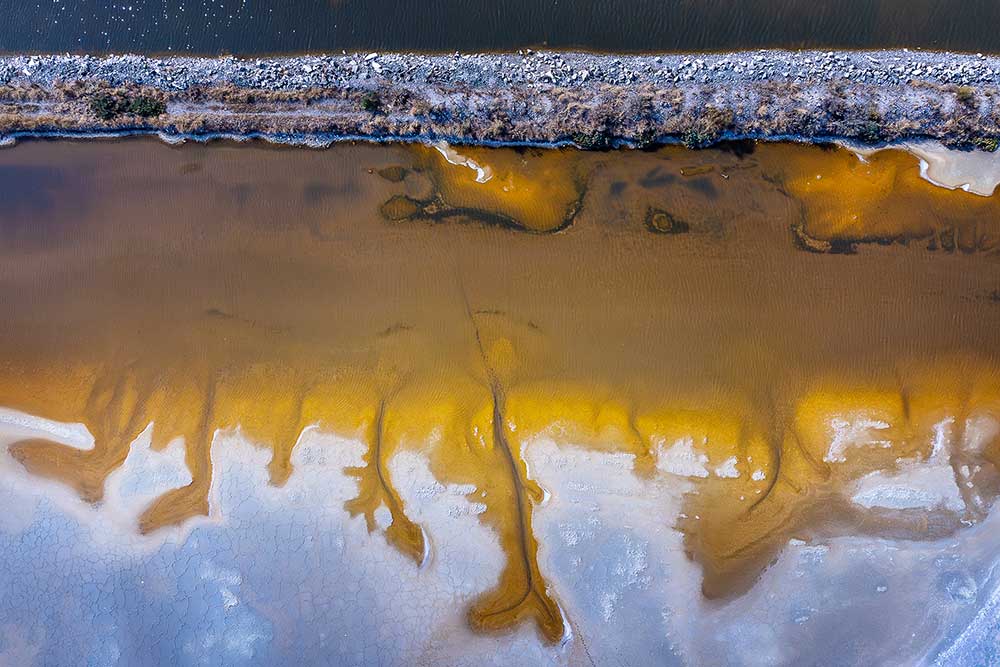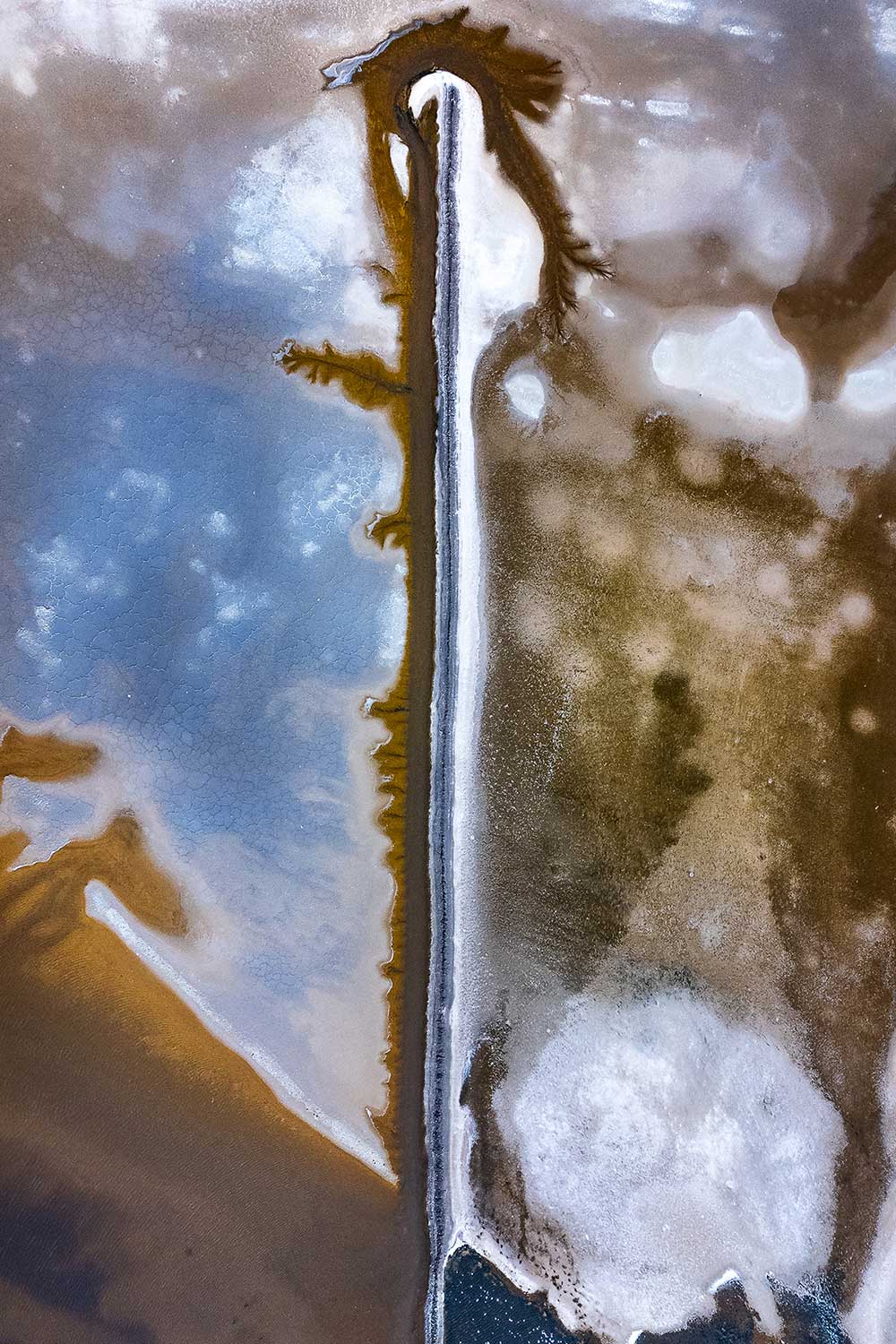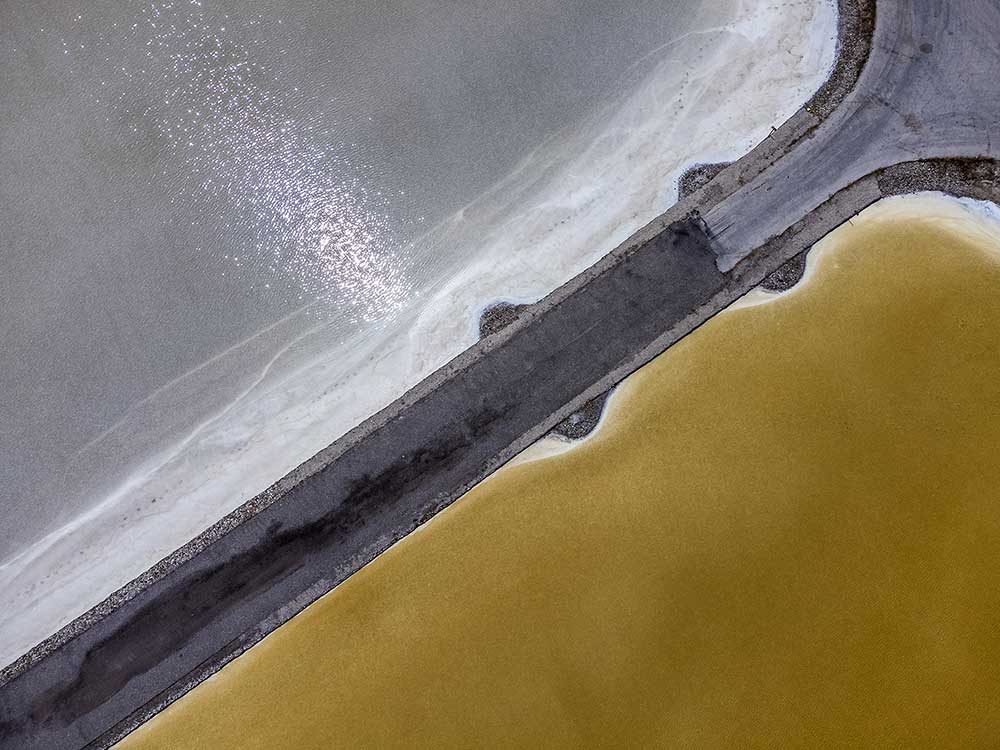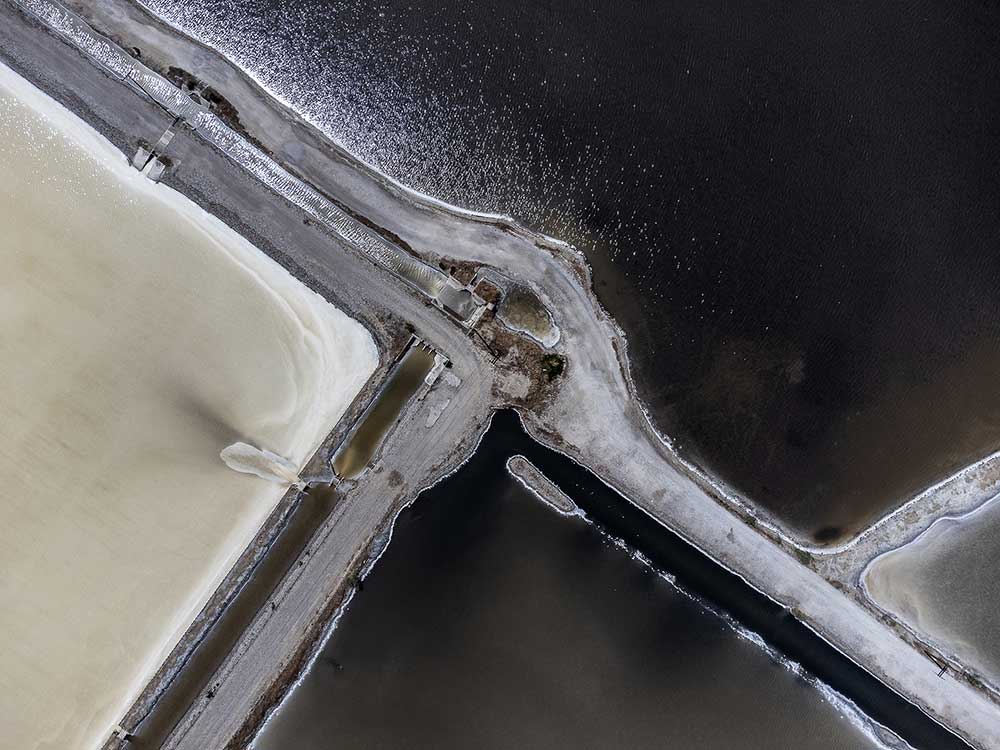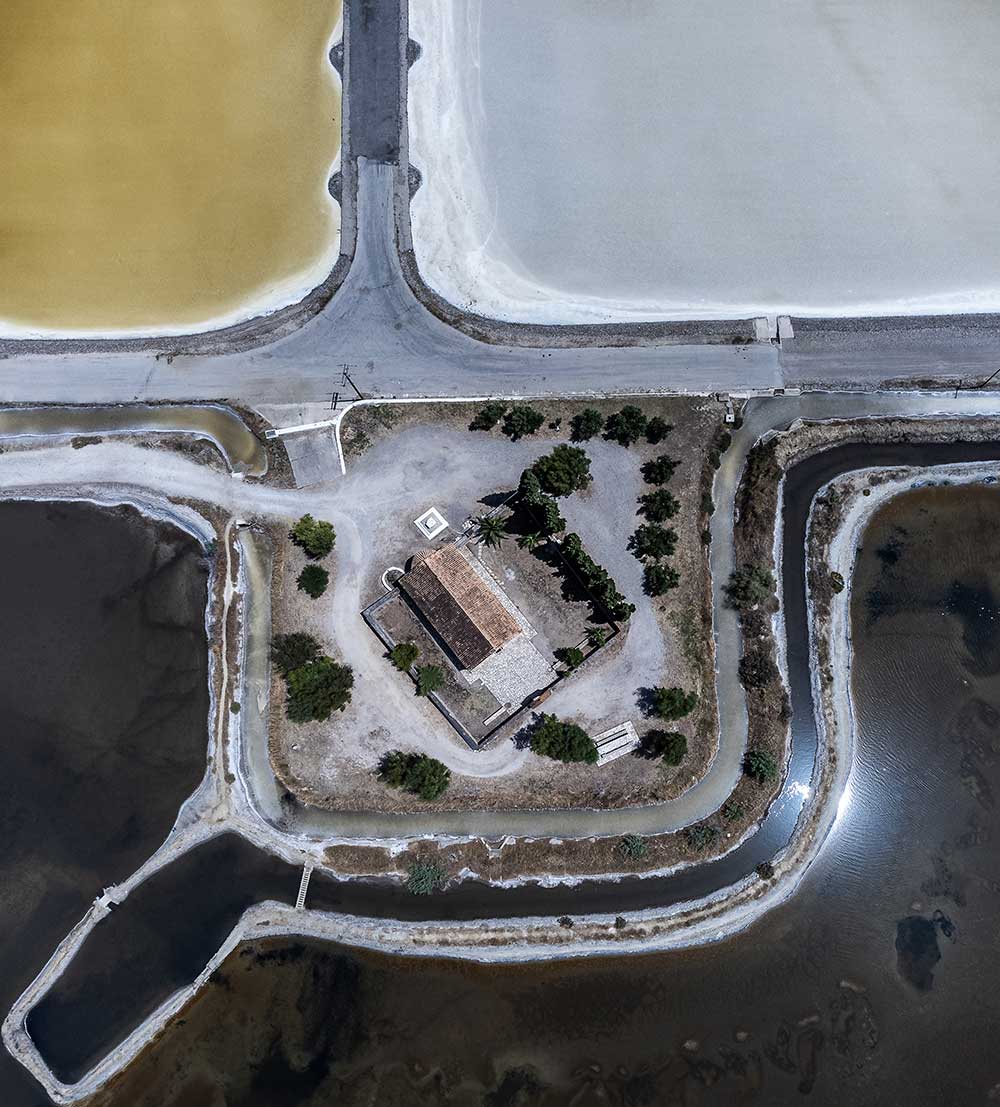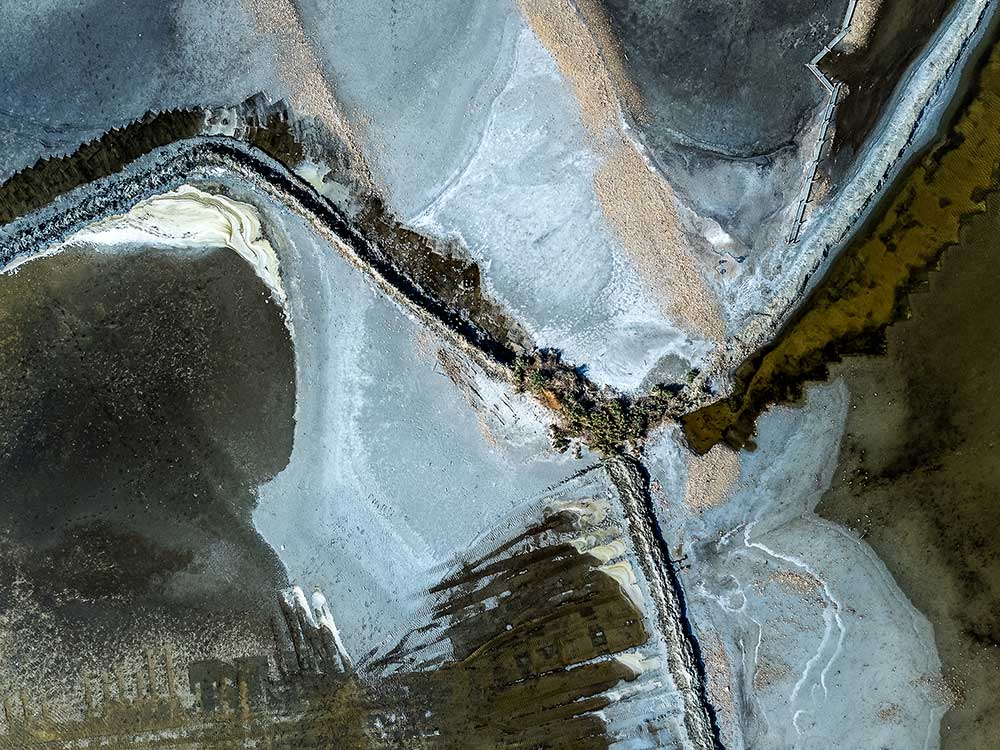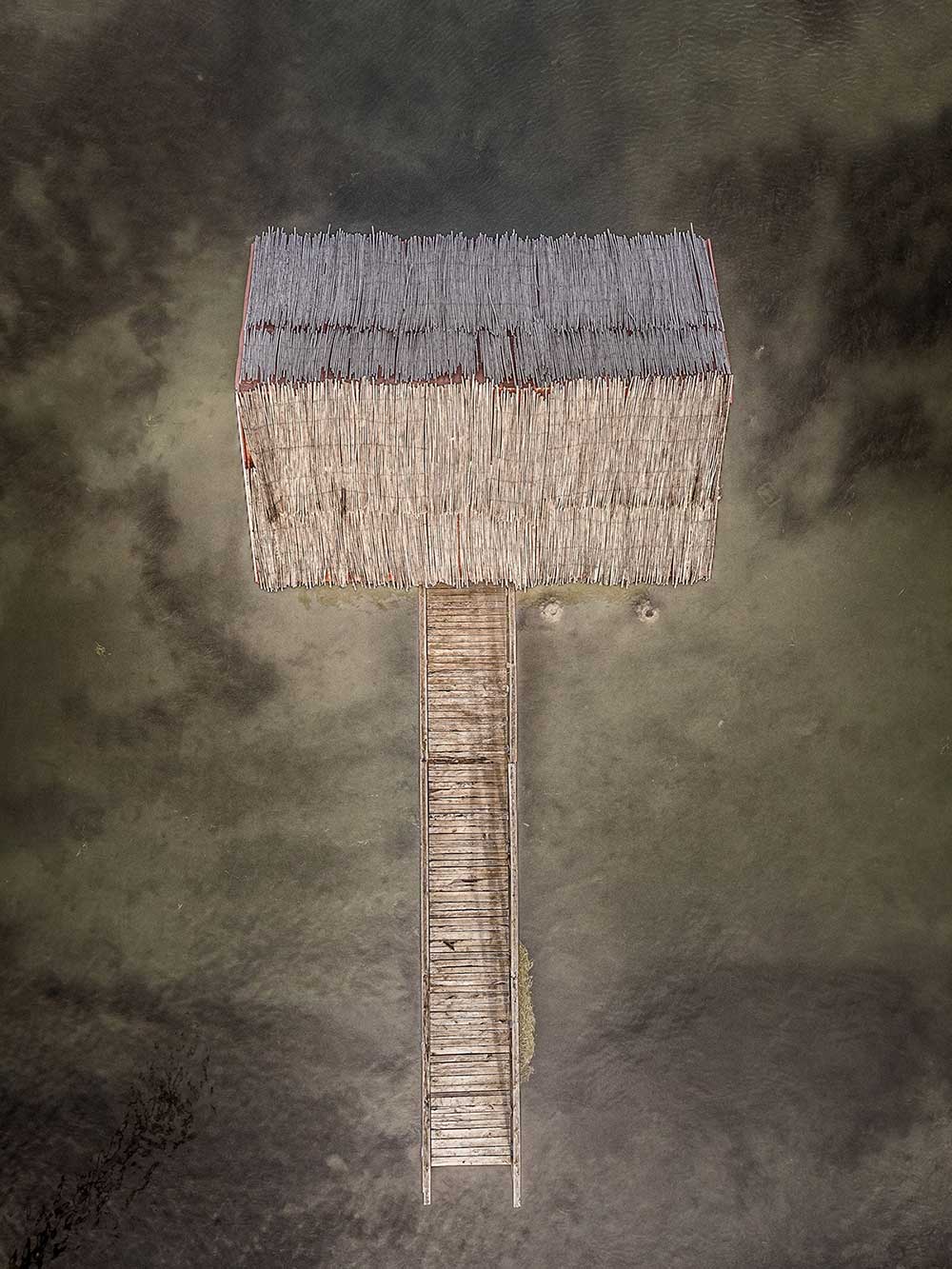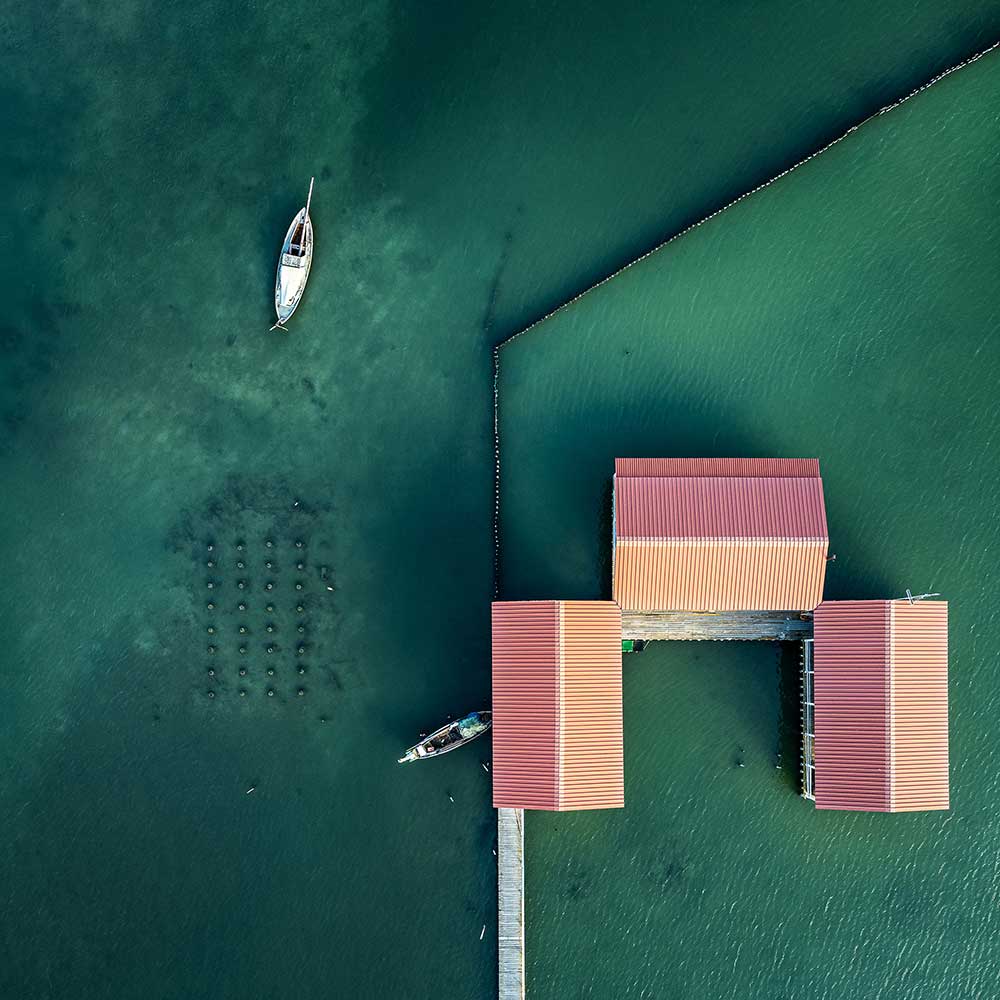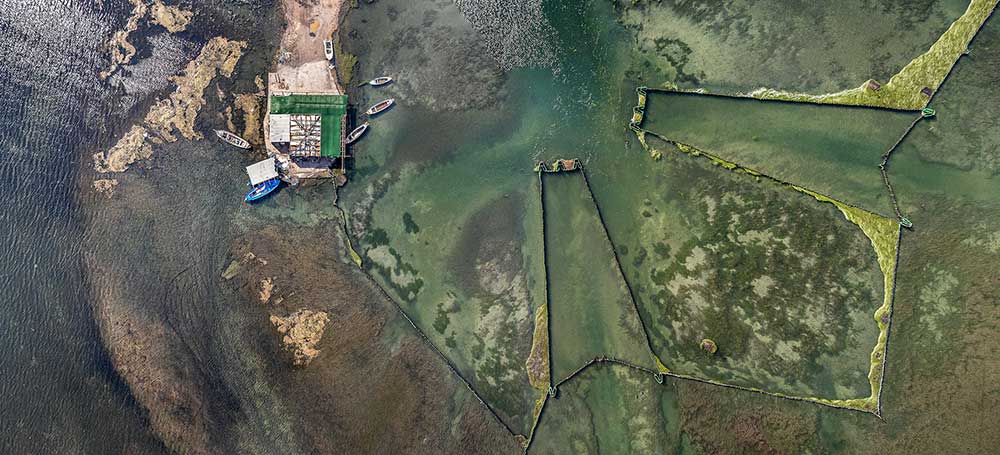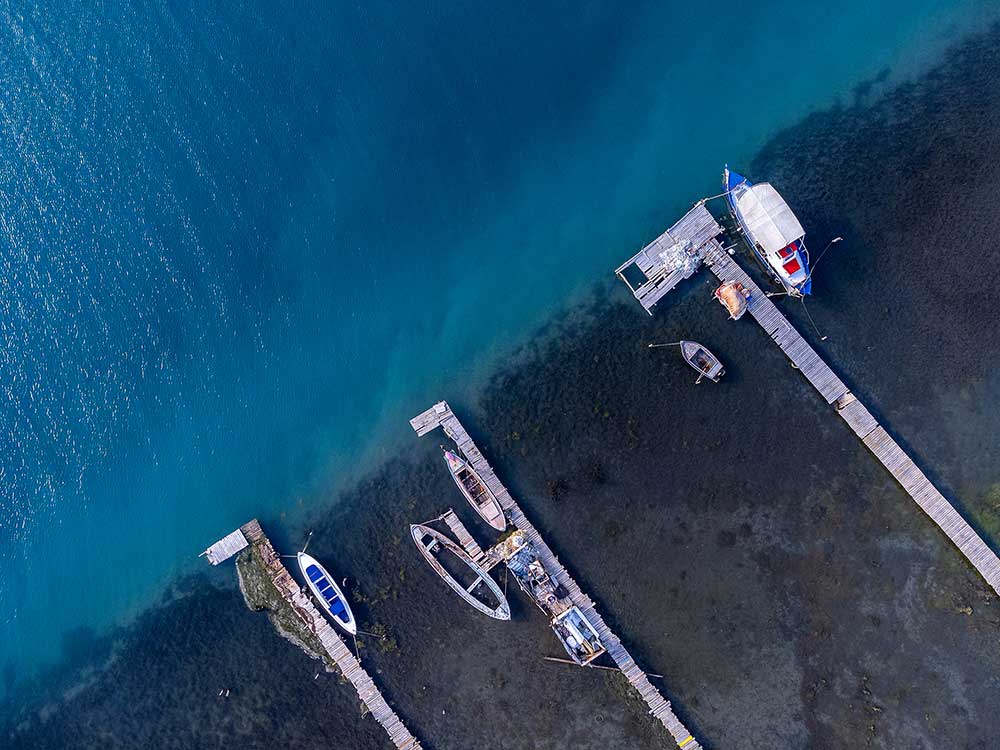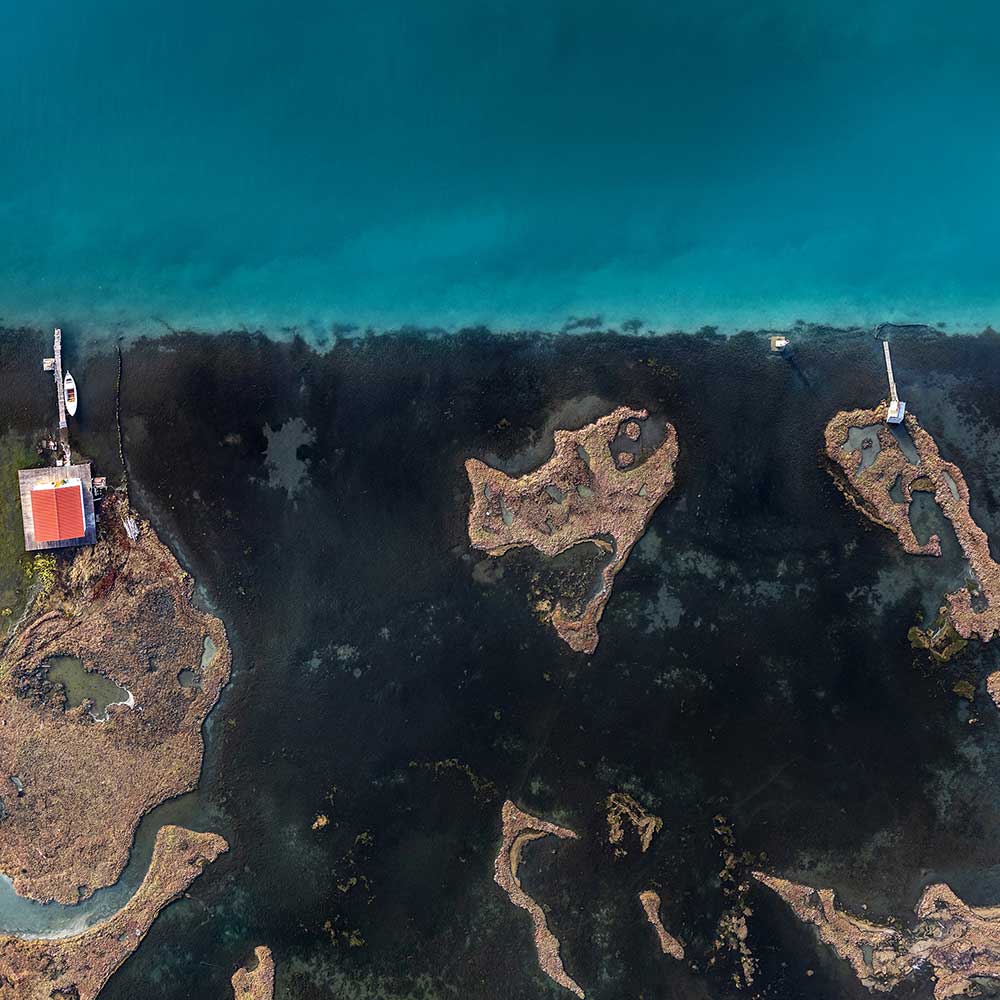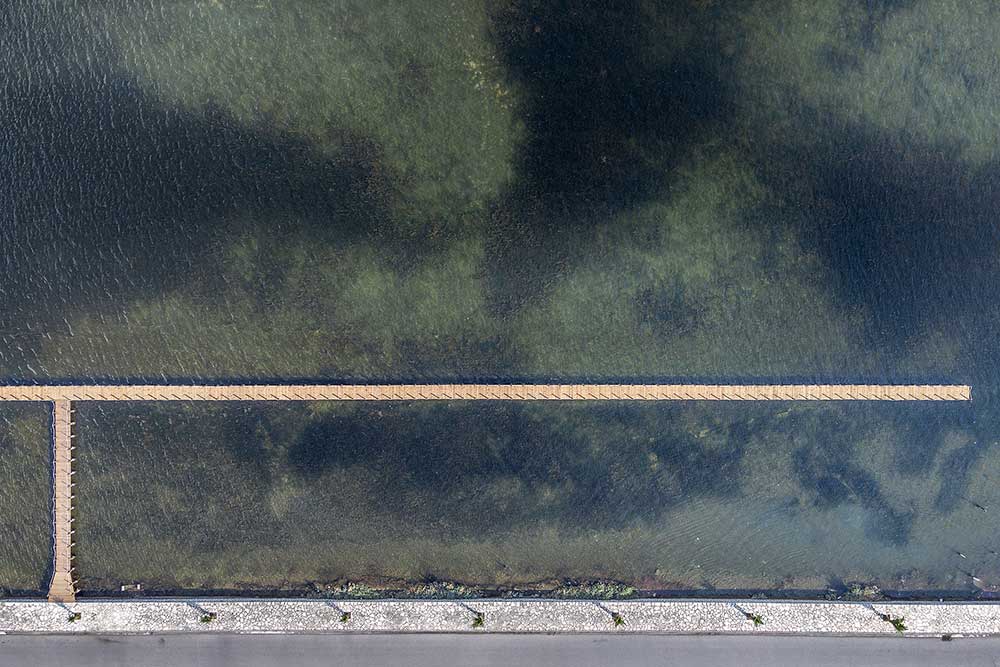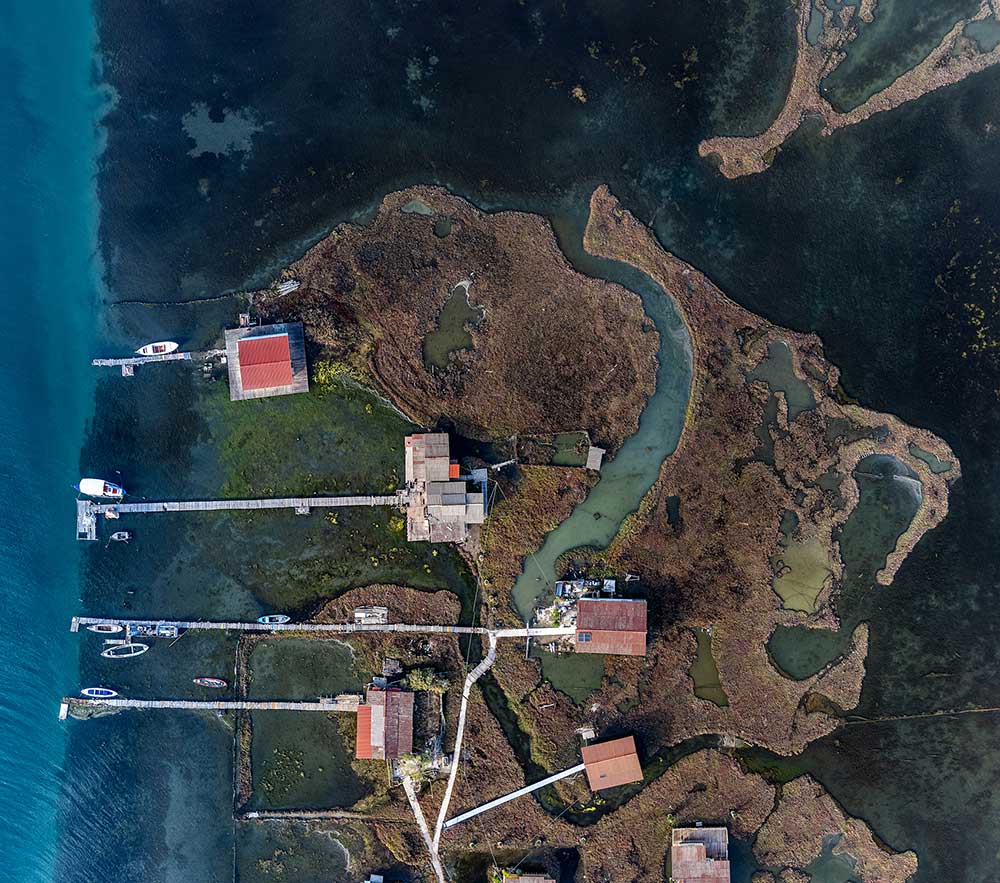The Messolonghi-Aitoliko lagoon complex is located in the north part of the Gulf of Patras in the central west coast of Greece. With its shallow area of 150 sq.km. extended between Acheloos and Evinos rivers, it is one of the most important wetlands in the Mediterranean.
The ecosystem comprises of six lagoons that are part of the Natura 2000 network protected by the Ramsar Convention. The open and closed type lagoons communicate with the sea along channels and receives fresh water from the drainage pump system of the region, creating a unique aquaculture environment. Fishing is mainly done with traditional methods by local fishermen in fish-pools called ‘divaria’. The area is also rich in black salt marsh and hosts one of the biggest salt factories. The mineral mud and sea-salt make Agia Triada and Alikies beaches ideal natural spas, a daily ritual for locals. The name of the settlement ‘Tourlida’ was given after the marine bird species that were found in the area, the tourlides (eurasian curlew). This islet connects to Messolonghi by a causeway stretching 5 km. Salt has played a crucial role in the history of civilisation, enabling food to be preserved over the winters until the modern era of refrigeration and preservatives. Salt was even used in the slave trade in antiquity. The ancient expression “not worth his salt” came from this practice. With tales of its usage during sacrifices and religious rituals, the history of salt is as exotic as is the amazing ‘Alykes’, the salt marsh gardens that extend for miles on end in Messolonghi. The region is said to produce 60% of the country’s salt.
This photographic project exploring the wider area of the lagoon started a few years back with a set of long exposure images of the ‘pelades’ stilt fishermen houses and became part of the collective fine arts exhibition ‘Lagoons – those fragile entities’ curated by Nina Fragopoulou at the Fethiye Mosque in Nafpaktos and later at the Museo del Territorio in Cormons Italy as part of the Trieste Photo Days Festival.
‘Salt Pans’ series presents subsequent studies using aerial photography to focus on the Salt Pans of the region, continuing the fuse the boundaries between topographic and expressive iconography in its exploration of the integral perspective. Planar views explore the unique formalistic elements of the terrain. The minerals and salt flats colour palette create natural abstractions evident only from this bird’s eye point of view. Its visit, depending on the time in the harvest cycle, reveals new and different formations and colour palettes. [Official Website]



